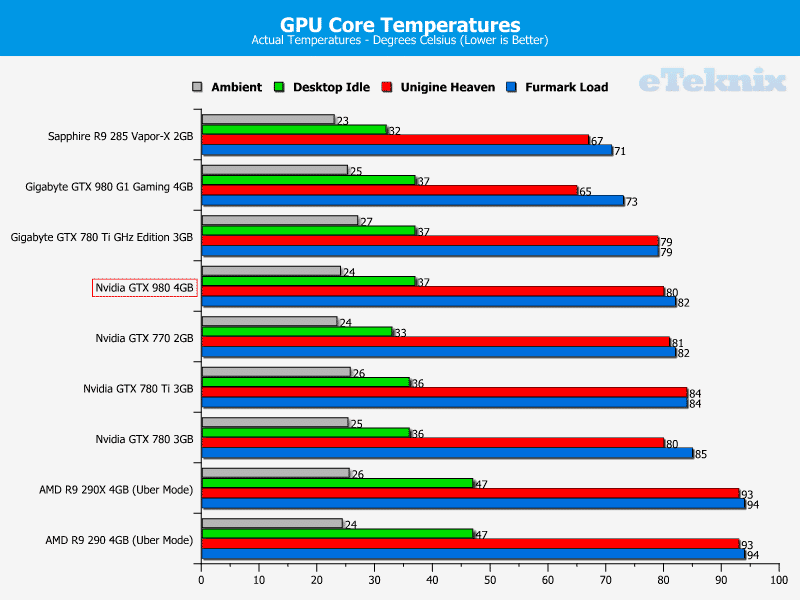Nvidia GeForce GTX 980 4GB “Maxwell” (28nm) Review
Ryan Martin / 10 years ago
Temperatures
The cooling solution which graphics card vendors choose to implement is one of the main differences that consumers have to contend with when choosing a graphics cards. Apart from their acoustic properties, the thermal properties of graphics card coolers are extremely important. Lower temperatures are always better and with AMD and Nvidia opting to use dynamic overclocking algorithms that take temperature into account it is important that graphics card vendors use high performance cooling solutions in order to maximise performance. The era of graphics cards reaching dangerous temperatures are now in the past but the importance of lower temperatures still remains. Lower temperatures mean better stability, longer component longevity and lower fan speeds .We take temperature readings after 5 minutes of three different load scenarios: desktop idle, Furmark load and Unigine Heaven load. We always record actual temperatures and make a note of the ambient. In the case where more than 1 GPU is used an average is created.

It may produce less heat and consume less power than any Nvidia flagship from the past two generations, but it still runs to the thermal threshold. Nvidia’s GPU Boost technology means the GPU will never go hotter than around 80-85 degrees and if it starts to get too hot it downclocks to stabilise temperature. In that regard the GTX 980 could still do with a better cooler but thermal throttling can be prevented with a more aggressive fan profile.



















